The Toshiba/Kioxia BG4 1TB SSD Review: A Look At Your Next Laptop's SSD
by Billy Tallis on October 18, 2019 11:30 AM ESTAnandTech Storage Bench - Heavy
Our Heavy storage benchmark is proportionally more write-heavy than The Destroyer, but much shorter overall. The total writes in the Heavy test aren't enough to fill the drive, so performance never drops down to steady state. This test is far more representative of a power user's day to day usage, and is heavily influenced by the drive's peak performance. The Heavy workload test details can be found here. This test is run twice, once on a freshly erased drive and once after filling the drive with sequential writes.

After handling The Destroyer well, the Toshiba/Kioxia BG4's performance on the Heavy test is disappointing. It's moderately faster than the mainstream SATA drive, but actually a bit slower overall than the older Toshiba RC100.
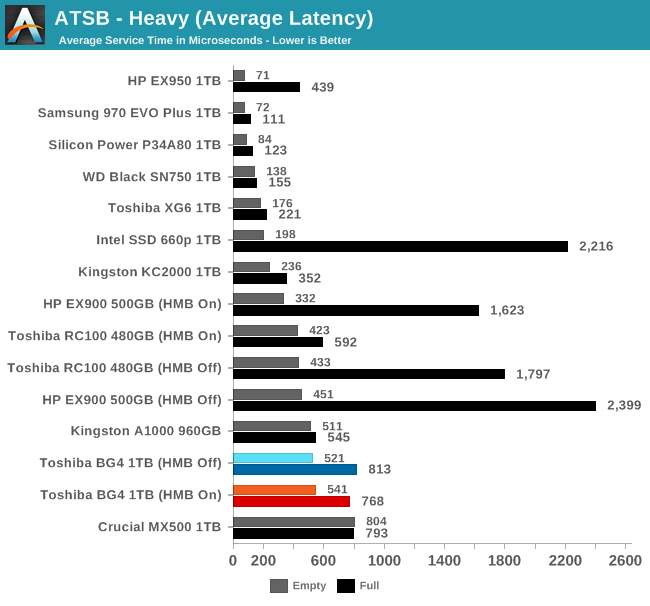
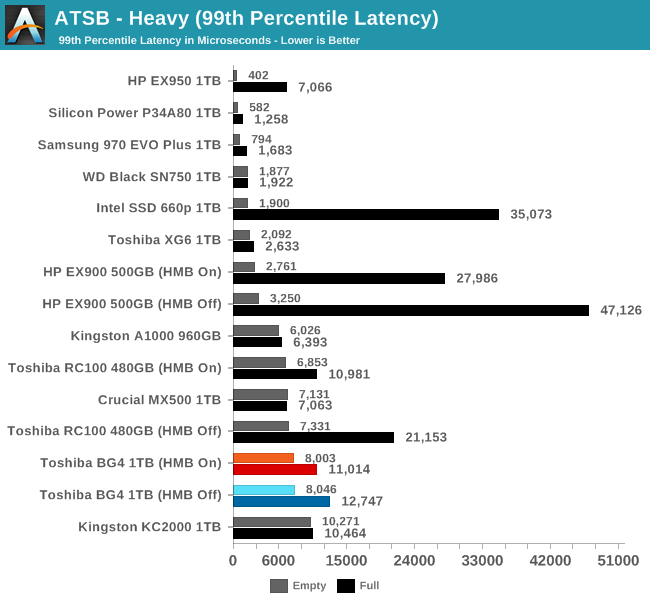
The average and 99th percentile latencies from the BG4 during the Heavy test are acceptable but unimpressive. The BG4 does handle the full-drive test run better than most of the other low-end NVMe drives, and keeps latency from going sky-high.
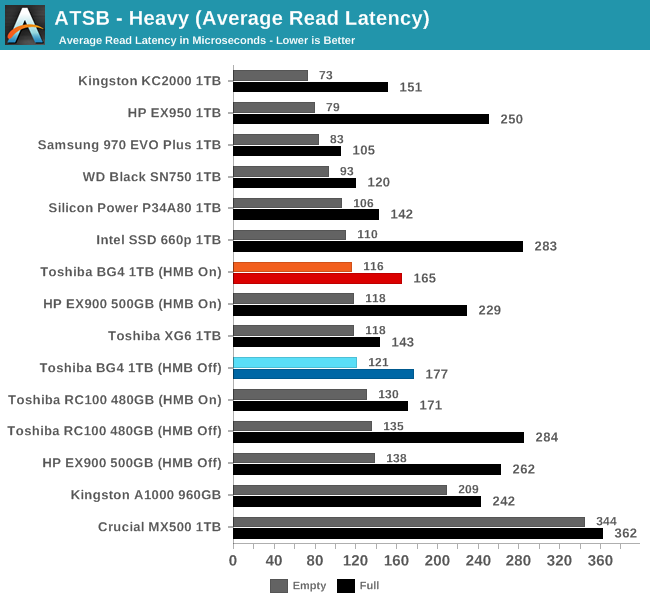
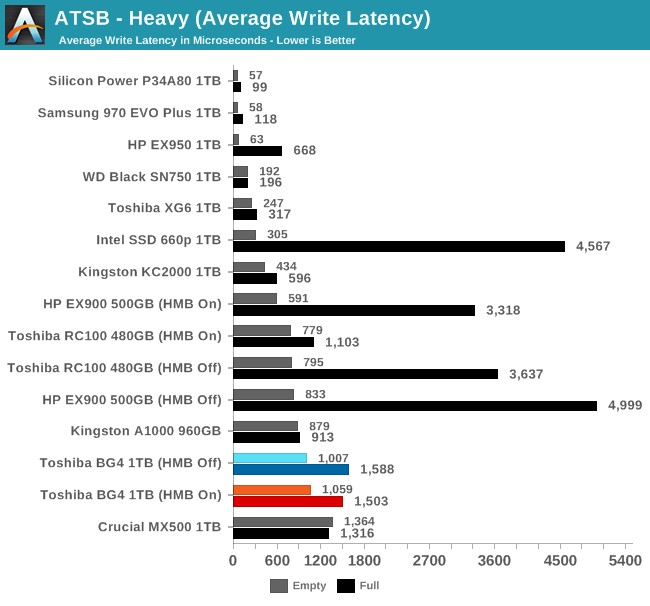
The average read latencies for the BG4 are generally competitive with other NVMe drives. The average write latencies are a bit on the high side, but even when full the BG4 only scores a bit worse than the Crucial MX500, rather than seeing latency spike by a factor of 5 or more.
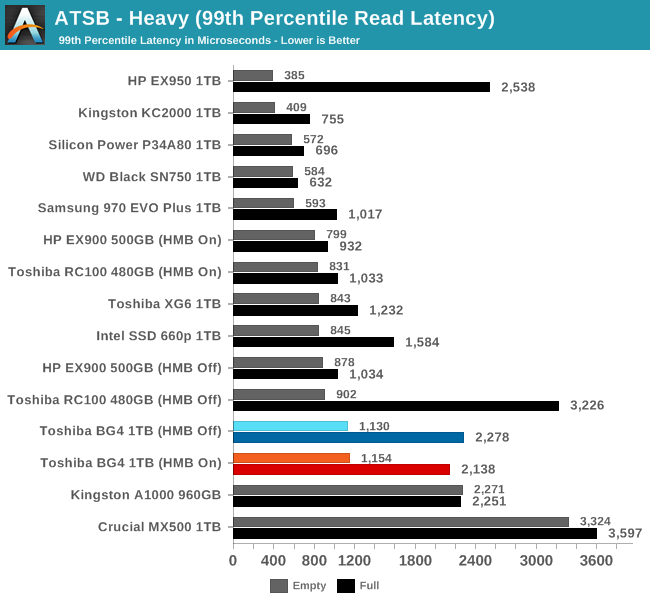
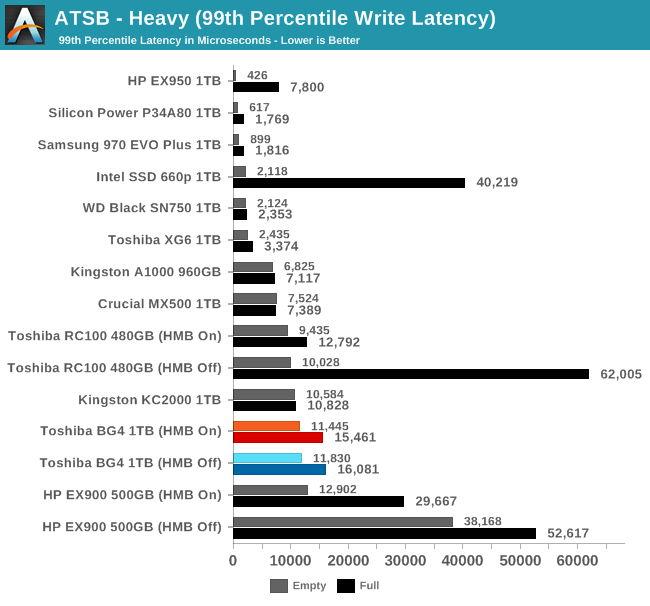
The 99th percentile read and write latency scores for the BG4 don't include any extreme outliers, but it is clear that the BG4 is still at a disadvantage relative to most of the drives that have their own DRAM.
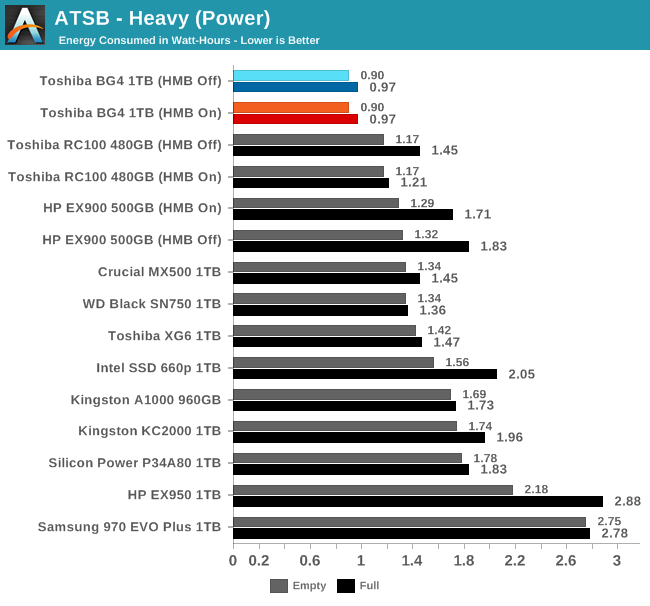
The BG4 turns in another set of excellent energy consumption scores. It's not an outright record, but it's the best yet from a NVMe drive.










31 Comments
View All Comments
intelati - Friday, October 18, 2019 - link
That last image is absolutely ridiculous. You get good performing 1TB of SSD storage on a postage stand.Jesus H Christ.
MaxUserName - Friday, October 18, 2019 - link
No, BG4 have too poor performance:https://www.storagereview.com/toshiba_bg4_nvme_ssd...
Ratman6161 - Friday, October 18, 2019 - link
I took a quick look at your link but quit looking when I saw they were testing SQL Server as one of their tests and with 15,000 virtual users. Completely useless use case. Even if you are are a software developer running a local copy of SQL Server, you won't be testing 15K users. So its performance somewhat pales in comparison to many full size m.2 SSD's. There are trade-offs to every component and in a laptop, particularly a thin and light laptop, those trade-offs usually have to favor saving space and power efficiency. It accomplishes those two goals on its own plus the smaller size may enable a larger battery in some systems. so what if your 2 TB 970 Evo outperforms it. The people buying the systems where this would be used won't care. It seems pretty ideally suited to its target audience.Tams80 - Friday, October 18, 2019 - link
I second that being a silly review.This is, as the article here states multiple times, for space-constrained devices. The BG4 more than meets the needs of these. As a bonus to us as customers, it means manufacturers are less likely to solder down the SSDs, so we can actually replace/upgrade them.
0ldman79 - Wednesday, November 13, 2019 - link
We're looking at a review right now.It's not as fast as NVME but it's faster than SATA on most benchmarks.
It's a quarter size of most NVME drives.
svan1971 - Saturday, October 19, 2019 - link
Lord, learn how to spell stamp, amen.wenart - Sunday, October 20, 2019 - link
Does Jesus have a second name?Jambe - Thursday, October 24, 2019 - link
Hieronymus, obviously.ToTTenTranz - Friday, October 18, 2019 - link
The Smach-Z uses a 2230 M.2 NVMe slot.Just saying.
Kishoreshack - Friday, October 18, 2019 - link
Excellent reviewdeep dive into the ssd we will get in our laptops
I just hope these form factors become common
&
are adopted for every laptop